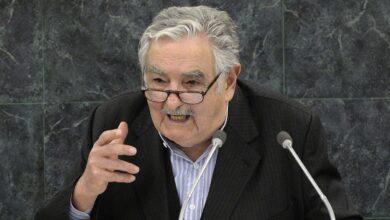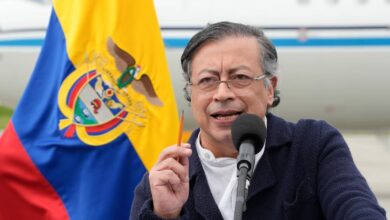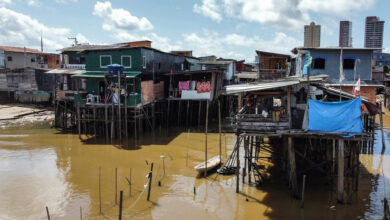What you need to know about the 5th UN Environment Assembly
The event focused its efforts on finding solutions that reduce the triple global emergency and allow meeting the objectives of the 2030 Agenda for Sustainable Development .

We will tell you what were the themes of the fifth UN Environment Assembly. Photo: Pexels
LatinAmerican Post | Mariann Estefanía Soto
Listen to this article
Leer en español: Lo que debe saber de la quinta Asamblea de la ONU para el Medio Ambiente
Between February 22 and 23, the fifth United Nations Environment Assembly (UNEA-5), the highest governing body of the United Nations Environment Program (UNEP) , took place in Nairobi, Kenya . The main theme was "Strengthening action by nature to achieve the Sustainable Development Goals ." In the framework of the meetings, a balance was made of the latest environmental policies and actions developed by the UN member states and real solutions were promoted to address the climate crisis and achieve the goals proposed in the 2030 Agenda.
Assembly preparation
On December 3, 2019, the Tables of the Assembly and the Committee of Permanent Representatives of the Governments chose the theme of the event. This decision was made in order to emphasize the leading role of nature in achieving the Sustainable Development Goals for 2030, divided into three dimensions: social, economic and environmental. Issues such as poverty eradication, sustainable consumption and production patterns, low-carbon economic recovery after the pandemic, and the protection and restoration of nature were taken into account when preparing the agenda for the assembly.
In March 2020, Sveinung Rotevatn, Norway's Minister of Climate and Environment, was chosen as the president of UNEA-5. Upon taking office, the politician declared: “Nature is the basis for achieving the Sustainable Development Goals (SDGs). In many ways we have taken it for granted, but we cannot afford to lose it. Taking advantage of the 'super year for nature' and the solid knowledge base on the critical state of it. I hope that in the next year we can agree on opportunities and significant changes to reverse current trends, in favor of nature and compliance with the SDGs ”.
Also read: UN warns of the triple emergency of climate, biodiversity and pollution
In last October, due to the COVID-19 pandemic, the assembly office changed the initial date of the event (from February 22 to 26) and decided to divide its agenda into two parts. The first session, focused on making urgent decisions, was simplified and took place virtually on February 22 and 23. The second session will be face-to-face, will take place in February 2022 and will be oriented to substantive issues that require deeper negotiations.
Conclusions of the fifth session
During the dialogue in which government representatives explained their respective countries' contributions to sustainable development, UNEP Deputy Executive Director Joyce Msuya pointed out eight key points to keep in mind :
- The health of nature and human health are inextricably linked.
- The crisis of nature is interrelated with the climate crisis and that of pollution.
- The pandemic is both a threat and an opportunity.
- Ecological restoration should move us towards a resilient, inclusive and low-carbon world.
- Ecological restoration must address the needs of the poorest and most vulnerable people.
- Several Member States are already putting in place key components for ecological restoration.
- As the world's leading environmental authority, the United Nations Environment Program has a crucial role to play.
After two days of meetings, world leaders and assembly attendees concluded that we are susceptible to the emergence of new pandemics if we continue to engage with nature in a destructive way. This is extremely worrying because, as Rotevatn pointed out, only the current COVID-19 crisis "has caused new and serious health, socioeconomic and environmental challenges, and aggravated those that were already present around the world." In addition, the President of Kenya, Uhuru Kenyatta, warned that the natural disasters witnessed in recent years are a call to address a triple global emergency: the crisis of climate change, the loss of biodiversity and the increase in pollution and waste. .
Decisions taken to fight against the triple emergency
As the closure of UNEA-5, the 153 UN member states and the more than 60 ministers of the Environment gathered agreed on three important decisions:
- Manage trust funds and contributions for two specific purposes: to support UNEP work programs and regional seas programs, conventions and protocols and special funds for environmental protection, conservation and management.
- Approve the medium-term strategy for the period 2022-2025 and the work program and budget for the biennium 2022-2023, proposed by Inger Andersen, executive director of UNEP. The strategy will transform the way this environmental authority operates and provide "science and knowledge to governments." The program for the biennium will work on climate action, digital transformation, action for nature, environmental governance, measures related to chemicals and pollution, financial and economic transformation, and the scientific-regulatory field.
- Postpone and resume UNEA-5 in 2022. Tentatively, the event will take place in person from February 28 to March 2 next year in Nairobi. Meanwhile, UN member states commit to continue "joint efforts to strengthen measures in favor of nature."
Recalling the dialogues and decisions made during the assembly, Andersen concluded: “The last few days have been encouraging. We saw a new global effort in favor of circular economies and efficient use of resources; a push to finance emission reductions through reforestation; We saw governments, scientists and companies come together to consider metadata as a tool for change, and we have witnessed how young people have raised their voices to tell us 'nothing about us without us' and ask for specific funds to enable more participation. profound on his part ”.




